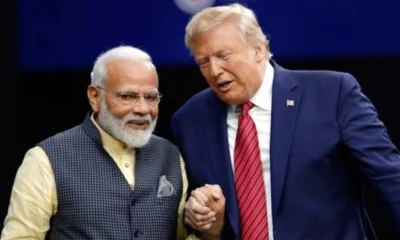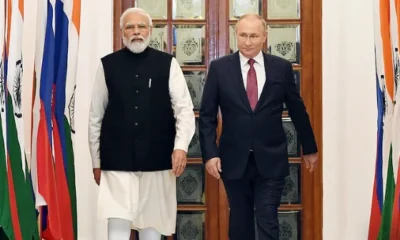[vc_row][vc_column][vc_column_text]In their endeavour to get over an inferiority complex, the ludicrous and ridiculous attempts by some participants at Indian Science Congress (ISC) to find scientific achievements in mythological tales have attracted attention of not just Indian media but international attention.
Coming on the back of similar assertions by one or two members on earlier occasions when the annual event was held after Narendra Modi government assumed office – with the Prime Minister himself talking about Lord Ganesha as an example of plastic surgery being practised in ancient India – this year has seen a surge in such ‘findings’ being presented at the ISC held at Jalandhar.
A science news portal Phys.org reported: “The distinguished gathering of Indian researchers and scientists hosts Nobel laureates, but in recent years has seen Hindu mythology and faith-based theories edging onto the agenda.”
The Indian Scientific Congress Association expressed “serious concern” as the unorthodox remarks aired by prominent academics at its annual conference attracted condemnation and ridicule.
At this year’s congress, Andhra University Vice Chancellor G Nageshwar Rao cited an ancient Hindu text as proof that stem cell research was discovered on the subcontinent thousands of years ago.
“We had 100 Kauravas from one mother because of stem cell and test tube technology,” said Nageshwar Rao, referring to the story from the Hindu epic Mahabharata.
Rao, who was addressing school children and scientists at the event, also said demon king Ravana from another centuries-old Hindu epic Ramayana had two dozen aircraft and a network of landing strips in modern-day Sri Lanka.
“Hindu Lord Vishnu used guided missiles known as ‘Vishnu Chakra’ and chased moving targets,” added the professor of inorganic chemistry.
Rao then explained evolution and human civilization while talking about the Dasavatara or 10 incarnations of Vishnu – from ‘Matsya avatar’ (fish) through ‘Kachchhap’ (Tortoise, an amphibian) to Varaha (pig) and man.
Another scientist from an university in the southern state of Tamil Nadu who was speaking at the conference said that Isaac Newton and Albert Einstein were both wrong and that gravitational waves should be renamed as “Narendra Modi Waves” while the gravitational lensing effect in physics would be renamed as “Harsh Vardhan effect”.
Dr KJ Krishnan reportedly said Newton failed to “understand gravitational repulsive forces” and Einstein’s theories were “misleading”.
He went on to claim that electricity and magnetism were the same phenomena.
India is no stranger to prominent figures debasing science or citing ancient Hindu texts like the Puranas and Vedas as ironclad evidence of the country’s technological prowess. Hindu mythology and religion based theories have increasingly become part of the Indian Science Congress agenda.
But academics said remarks at this year’s ongoing summit were even more astounding than usual.
Indian scientists have hit out at speakers at a major science conference for making irrational claims.
Critics said ancient texts are still to be read and enjoyed – but it was nonsense to suggest they were science.
The Indian Scientific Congress Association (ISCA) expressed serious concern at the remarks.
“We don’t subscribe to their views and distance ourselves from their comments. This is unfortunate,” Premendu P Mathur, general secretary of Indian Scientific Congress Association, told AFP news agency.
“There is a serious concern about such kind of utterances by responsible people,” he said.
Last year, India’s junior education minister, Satyapal Singh, told an engineering awards ceremony that airplanes were first mentioned in the ancient Hindu epic, Ramayana and the first working plane was invented by an Indian named Shivakar Babuji Talpade eight years before the Wright brothers.
He also said Darwin’s theory of evolution was wrong, and vowed to change the national school curriculum to reflect that.
In 2014, Prime Minister Narendra Modi told a gathering of doctors and medical staff at a Mumbai hospital that the story of the Hindu god Ganesha – whose elephant head is attached to a human body – showed cosmetic surgery existed in ancient India.
In the Mumbai session in January 2015, Anand J Bodas, principal of a pilot training school in Kerala and Ameya Jadhav, lecturer at a Mumbai junior college, presented a paper within a symposium titled ‘Ancient Sciences Through Sanskrit’. Bodas and Jadhav claimed that ancient Indians had invented aircraft that could fly in multiple directions and had even reached other planets. They cited as reference a text known as the ‘Vaimanika Shastra’, which has descriptions and some diagrams of what have been claimed to be ancient aircraft. The text, claimed to have been written by the Vedic sage Bharadwaja is, however, dated to 1904 and scientists earlier had concluded that the designs in it were unrealistic and such aircraft could not have taken off, much less been capable of inter-planetary travel. Prior to the congress, noted scientists had objected to the paper being presented because of its pseudo-scientific nature.
At the same symposium, other papers were presented on ‘Engineering applications of ancient Indian botany’, ‘Neuro-science of yoga’ and ‘Advances in surgery in Ancient India’, all of which claimed ancient Indians had made fantastic inventions predating ideas in the West in the Early Modern period.
Addressing delegates at the session, Union science and technology minister Harsh Vardhan claimed that ancient Indian mathematicians had discovered the Pythagoras theorem “but very gracefully allowed the Greeks to take the credit”.
He also misquoted Stephen Hawking as praising the Vedas for containing a “theory superior to that of Einstein’s e equals mc squared equation”.
The education minister for the western state of Rajasthan said in January 2017 that it was important to “understand the scientific significance” of the cow, as it was the only animal in the world to both inhale and exhale oxygen.
The Breakthrough Science Society, an Indian-based educational charity, said it was “astounded and even horrified” at the remarks made at an academic summit. “Puranic verses and epics are poetic, enjoyable, contain moral elements and rich in imagination but not scientifically constructed or validated theories,” the group said in a statement Sunday.
“Such a hallowed assembly of scientists has been misused to make false and chauvinistic claims about ancient India.”
Mainstream scientists expressed displeasure over the claims made at ISC. Regarding the latest lecture by the Andhra University VC, the Indian Science Congress Association has expressed shock. “I feel very sad about the type of things he presented before the children. I had told our team to keep a check and that nothing unscientific should be spoken about from the stage. It is shocking when a person of the stature of a state university VC speaks like this,” said ISCA general president Manoj Kumar Chakrabarti, a biologist.
“All the abstracts of the papers to be presented at the sessions were scrutinised properly. The research papers were all above board and had no unscientific claims. However Rao came just for a talk at the Children’s Congress. The speech was not vetted as it must have been assumed that a vice-chancellor could give an inspiring talk to the children. I will now have to check how Rao got invited to give the lecture and whether there was a hint of what the contents of it would be,” Chakrabarti added.
ISCA general secretary Premendu P Mathur said, “Science is based on citation, logical explanation and experimentation. Had I been there, I would have questioned him about it. One should have asked him for evidence.”
Such claims have led to noted scientists staying away from sessions of the congress in the past. In 2016, Indian-born Nobel laureate V Ramakrishnan, a biologist at Cambridge University, had objected to religious ideas being mixed with science. “I attended the congress once and very little science was discussed. I will never attend it again. The idea that Indians had aircraft 2000 years ago sounds almost essentially impossible to me.
On Sunday, representatives from the Akhila Karnataka Vicharavadigala Vedike (Karnataka Rationalists’ Forum), and Breakthrough Science Society (BSS), an organisation of scientists and researchers that seeks to popularise science, as well as other organisations held a silent protest with placards outside the Indian Institute of Science in Bengaluru.
“We had met the ISC Association president after the Mumbai session in 2015 and handed him a petition raising our concerns. After that we’ve had the congress in Mysuru, Tirupati, and so on, and the same things continue. People must ask the organisers how they allow this,” Rajani KS, secretary, BSS Karnataka, said.
BSS will hold protests in multiple Indian cities on Monday, including outside Andhra University to protest claims by its V-C, G Nageswara Rao, that Kauravas were born using stem cell technology , and Ravana had 24 types of aircraft.
CNR Rao, noted chemistry professor said, “I avoid attending sessions of the congress. If I attend, it might appear as if I am endorsing these statements and claims.”
The 106th Indian Science Congress is being held in Jalandhar, from January 4 to 7. The principal goals of the congress are “to advance and promote the cause of science in India and to hold an annual congress at a suitable place in India”.[/vc_column_text][/vc_column][/vc_row]


 India News21 hours ago
India News21 hours ago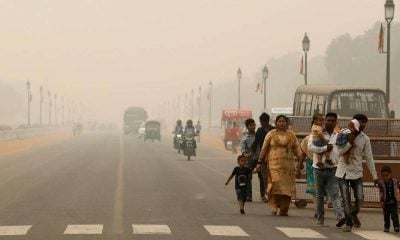
 India News20 hours ago
India News20 hours ago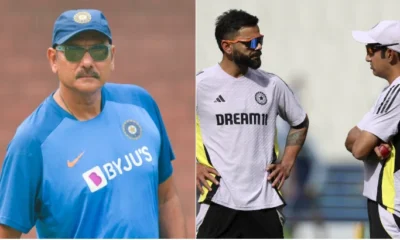
 Cricket news20 hours ago
Cricket news20 hours ago
 India News5 hours ago
India News5 hours ago
 India News5 hours ago
India News5 hours ago
 Latest world news5 hours ago
Latest world news5 hours ago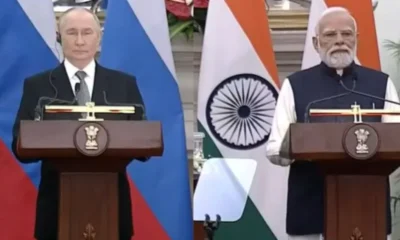
 India News8 mins ago
India News8 mins ago
 Entertainment48 seconds ago
Entertainment48 seconds ago




